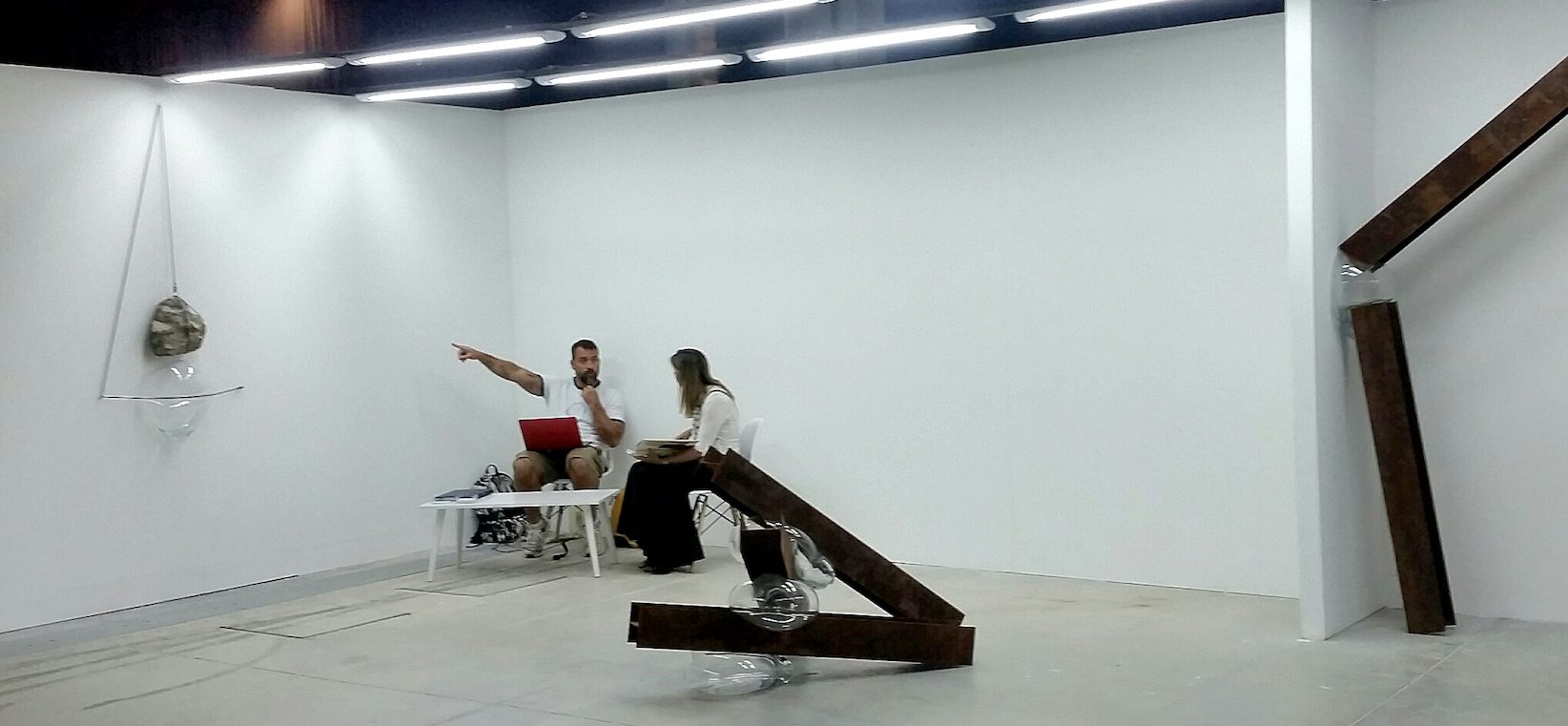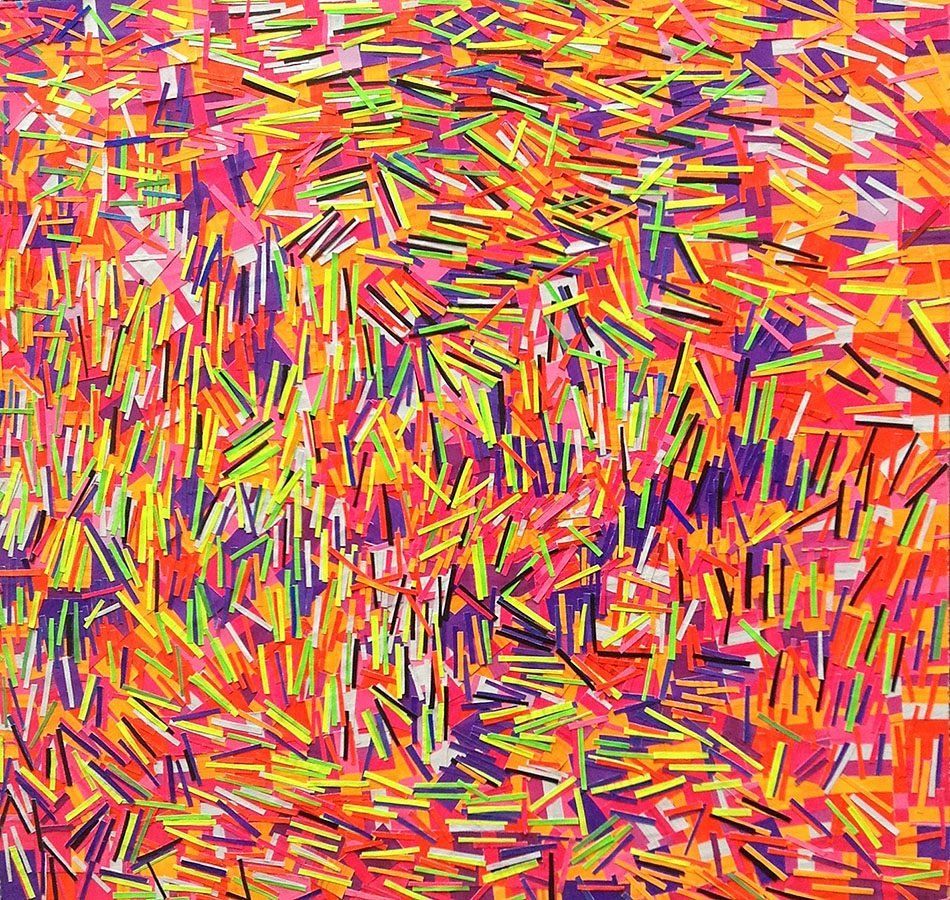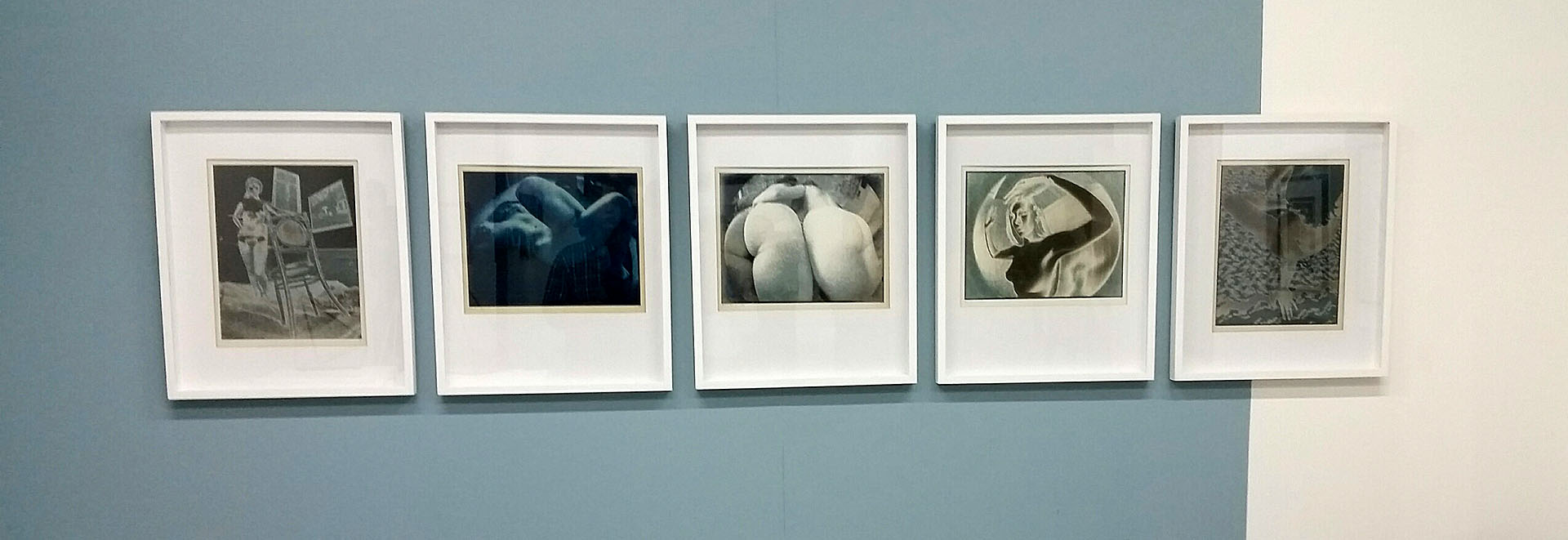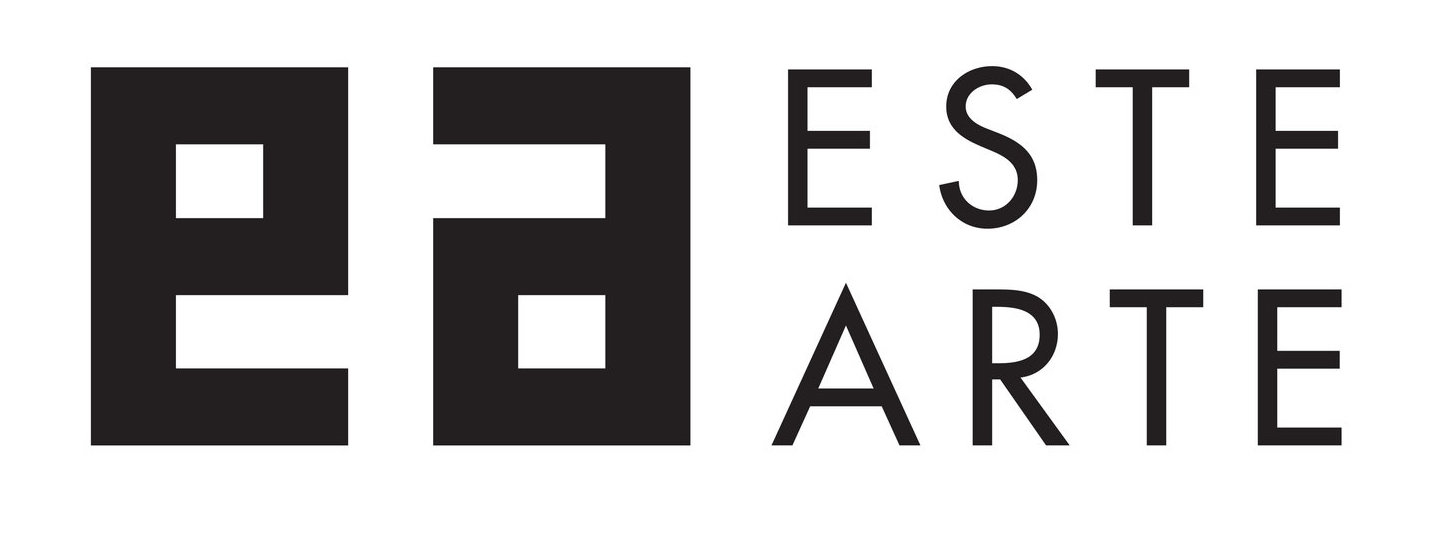ESTE Arte Gets Room to Grow
 Works by Tulio Pinto in the booth of Baró Galeria at ESTE Arte
Works by Tulio Pinto in the booth of Baró Galeria at ESTE Arte
After the completion of the Punta del Este Convention & Exhibition Center, Este Arte finally had a venue befitting its diverse cultural agenda that can house an international contemporary art fair of this stature. Gone are the makeshift tents and confusing building layouts with their provisional grass field parking of former years. While the latter may have provided beach chic character to an important event, the ample dimensions of the new purpose-built convention center are much more suitable for showcasing art.
The center’s soaring ceilings and spacious corridors let larger works breathe. Lighting is more flexible and focused. Even the smallest booths are not over-crowded and the fair in general has a more professional feel. In legitimate art fairs worldwide, exhibitors who pay hefty participation fees still manage to avoid the temptation of slapping paintings on every square inch of rented wall space like your typical shopping mall gallery. Este Arte is no exception, with galleries respectfully spacing their works for proper viewing, thus promoting extended interaction with each piece while avoiding visual sensory overload. Participating artists, albeit few since this is a gallery-centric event, are ready and willing to discuss their works with enthusiastic patrons.

On to the Art
Most of the approximately 30 participating galleries conduct business in the southern region of Uruguay, Argentina, Brazil and Chile. Due to solid relationships with the event’s original creators, Switzerland is also well represented. A handful of galleries also hail from the United Kingdom and the United States.
This year you will notice a timeless cohesiveness to the curation of selected galleries. While the organizers have at times classified this fair as specifically “contemporary,” we’ll reject being labeled nitpickers by suggesting that this year’s line up should probably be classified more appropriately as Modern, Post-War & Contemporary.
Inclusion of work from an extended chronological period is actually one of the show’s endearing highlights. Modernist works dating from the first half of the 20th century are available. Dozens of works, particularly those in some of the Uruguayan and Argentinian galleries, have atemporal qualities that defy users to place them accurately on a timeline, respect for which usually jettisons us at Artfronts beyond our word limits.
While the show in general is not particularly edgy, it is the smart, thought-provoking and well-crafted work of multiple eras that dominates. Clear contemporary interpretations of traditional or modern references are apparent throughout the fair, especially when hanging works of different periods virtually side-by-side.
You will not find works at Este Arte considered shocking or controversial, however the fair stands as a distinctly homogenous presentation of top quality art. There is an appreciated fluidity of artistic oeuvres beginning with modernist roots such as Picasso, Torres-Garcia, Miró and Le Parc through late 20th century local icons including Bruno Widmann or Maria Friere, and forward to the more contemporary works of Tulio Pinto, Paula Otegui and the fascinating kinetic works of Paula Rivas.
We’ve long supported digital technology in the arts. We still see the same attempts to shroud its usage. It should be obvious by now that the use of digital imaging as a creative tool and presentation device is ubiquitous in the art world. What follows is not a criticism, rather an observation: In almost every contemporary art fair I’ve visited or participated in over the past decade+, I see painters applying digital contextual ideas to traditional media to make it seem more contemporary, for instance repetitive motifs, false visual illusions, blurring and moire effects, loosely worked cut-outs and elaborate layered effects, all of which are readily found in digital work. Parallel, we also see many digital artists adding traditional analog painting, drawings, coatings, paste-ons, textural layers, staining and other techniques to add touch and texture to their prints. It’s actually quite amazing to see the two camps, often at odds in years gone by, trying so hard to emulate each other!
Another condition we’re often spoken about at solo exhibitions is the trend toward creating shows where the whole is often greater than the sum of the parts. In other words, certain artworks may complement each other perfectly but lack vital elements when approached separately as single pieces outside the realm of the exhibition. We won’t mention any by name, but when you visit the show, see for yourself if there are any examples at Este Arte. Not that this is a bad thing, but it is familiar theme that’s worth noting.
 The Punta del Este Convention Center provides ample space for ESTE Arte to grow.
The Punta del Este Convention Center provides ample space for ESTE Arte to grow.
Surprises ?
1. One characteristic of many South American fairs is their predominantly regional offerings. Let’s face it, we’re thousands of miles from most art centers. Travel and shipping costs for a three to five day event are prohibitive, even for northern hemisphere galleries who become year-round regulars on the important international fair circuits.
While international participation is still the exception rather than the norm beyond the elite shows of Sao Paolo, Rio and Buenos Aires, to our surprise we found a captivating collection of photographs featuring Allen Ginsburg and the Beat Generation @ Photology of Pueblo Garzon, Uruguay!
2. Galeria Sur, a forerunner in Uruguayan traditional and modern art for decades but also one with a strong stable of current national artists including Marcelo Legrand and Eduardo Cardozo, went full bore pulling from their 20th century masters collection featuring Joaquin Torres Garcia, Maria Friere and Jose Gurvich. Presenting a potential contradiction within a contemporary-slanted exhibit, Sur’s modern works did an excellent job framing and seeding that which would come later.
3. Reginaart Collections rocked some works by major 20th century artists, generally smaller, less important but nevertheless enjoyable works by Europeans: Picasso, Matisse, Masson, Míro, Modigliani and Chilean Roberto Matta. Like Galeria Sur, the program offered influential context and foreshadowing to almost a century of art that follows throughout the fair.

A set of 5 works by the late Hungarian artist, Bandi Binder, in the booth of Black Gallery of Pueblo Garzon.
Successes?
1. A series of 5 small works by the late Bandi Binder @ Pueblo Garzon’s Black Gallery.
2. Tulio Pinto’s large installations @ Baró Galeria provide scale for which the new convention center yearns. (Be sure to catch the Pinto exhibition later in January at the Atchugarry Foundation, another massive show space which Pinto can use to best advantage with his alternative material work.)
3. We can’t recall a fair that had a higher percentage of female artists represented across the board at Este Arte. While perhaps still not 50-50, we’re getting closer. Bravo for the galleries for letting excellent women artists get their overdue recognition during an important period.
4. Diana Saravia Gallery has carved a solid niche representing an impressive stable of emerging, mid-career and established Uruguayan artists. We especially enjoyed a mid-sized painting by Santiago Garcia featuring the omnipresent southern cone palette and markings combined with semantic labeling, not unlike works by Javier Bassi, Diego Donner and others working with similar materials and styles.
Try again next year?
Este Arte is solid and congruent from top to bottom. If there's any room to quibble, we didn’t see any particularly exciting or relevant video or new media work. Banal, mundane content in unprofessional productions doesn’t appeal to us as being particularly challenging nor witty, rather more like emerging artists who’ve yet to master the tools and the medium. We have a long leash when it comes to supporting all art forms and we’re not easily bored, but frankly, there are television programs with infinitely more interesting graphics and video introductions. Perhaps it is simply a matter of developing the appropriate rubrics for evaluating this relatively new medium without expecting it to be something that was intended.

Paula Rivas, Paula Otegui and more @ Pabellon 4 Art Contemporaneo.
Best in Show?
Artfronts generally travels as a group of at least 3. After sharing notes and careful consideration, we chose the following as the best artist and most interesting booth:
Paula Rivas’ kinetic works at Pabellon 4 Art Contemporaneo from Buenos Aires, Argentina are wickedly smart, compelling, soothing yet energizing, an art proposition about now that we believe will age extraordinarily well. There’s nothing particularly revelatory about kinetic art, motorized mobiles or the interplay between objects, shadows, light and surroundings, however we love Rivas’ scale, subdued movement and attention to precision that pay homage to today’s technology while remaining clearly grounded in a traditional aesthetic. These works are revealing and intimate. Rivas doesn’t try to overwhelm the viewer like so many of the larger scale works of Le Parc, Soto and Cruz-Diez.
Combined with the equally current and vigorous paintings of Paula Otegui, Pabellon 4 was our favorite booth. www.pabellon4.com
Key Speakers
While Este Arte continues to expand, one feature that has maintained its intimacy is the speaker sessions where small group sizes and public access allow people to interact with artists, collectors, curators and other art world professionals. One-on-one sit downs are refreshing and enlightening. Kudos to the organizers for maintaining access that personalizes any art show.
Talks are scheduled each evening. Check the estearte.com website for more information, topics and times.
What is the future of ESTE ARTE in Punta del Este?
To be considered in the same strata as the established Latin American fairs of Brazil, Argentina and Colombia, the quantity of galleries must eventually rise from around 30 to at least 60, preferably 75-100. Yes, the Uruguayan art market is minuscule in comparison to its giant neighbors, but Punta del Este is already a major drawing card that attracts hundreds of thousands of visitors from around the globe. Distance to the Southern Cone is a deterrent, however Punta del Este has the lodging, shipping and facility infrastructure that could easily handle a larger event, especially it it were held outside of the peak month of January. Of course, to make the event a destination in itself outside of the already heavy tourist season, both international and local depth & breadth need to be augmented.
With so much room to grow, we hope the fair will attract more regional and international galleries to broaden the scope of programs and perhaps add more large scale site-specific installations so visitors can experience the diversity of art now available worldwide. We believe that local growth alone could easily double the number of booths without any discernible reduction of quality. Adding serious, trend-setting galleries from Los Angeles, New York, London, Paris and Berlin would provide wider diversity of international art that's rarely seen in these parts, not to mention a providing a provocative north-south juxtaposition that would benefit visitors and locals alike.
We’d also like to see public access increased to some of the finest features of the event, such as the off-site VIP roundtable discussions in Jose Ignacio that annually feature the most interesting speakers. Private invitations to closed events are common throughout the Punta del Este social scene, as they are in the global art world. Perhaps it’s time to lead by example by opening the tap to more artists, new collectors and fresh eyes rather than shelter the best presentations for the elite. Art communities ALWAYS improve through tolerance and inclusion.
Notably absent from a local perspective was Galeria del Paseo of Manantiales. Fortunately, some of the finest artists in their stable, including Rimer Cardillo, Pablo Siquier, Fidel Sclavo and Rita Fischer, were dutifully represented in Este Arte by other galleries. Exclusive relationships are common in many art meccas. In a small, fractured market such as Uruguay, it is not unusual to see the works of leading artists exhibited in numerous regional galleries simultaneously. Marcelo Legrand, Eduard Stupia and the late Maria Freire were three of the artists whose works we spotted in more than one booth. We’d also like to see the Ignacio Iturria Foundation take an active role in Uruguay’s preeminent summer art showcase, without whom there remains a gaping hole. No Donner, no Bassi, no Perez Franco, no Tiscornia. The list of excellent Uruguayan artists who aren't included is much longer than those who are. One can only assume that the same is true for Argentinian and Brazilian artists.
How might we increase exposure for more artists?
For decades, hundreds of the finest local artists have perfected their crafts through revered work/learn talleres (artist workshops) led by luminaries such as Jose Gurvich, Luis Camnitzer, Nelson Ramos, Clever Lara and others. These collaborations were a natural progression from the Southern School approach pioneered by master, Joaquin Torres Garcia, back in the 30s upon his return from Europe.
Learning from peers is still considered a vital right of passage for many Uruguayan artists. Case in point is the importance placed on this learning and maturing process in many of the artists’ personal curriculums. With direct sales from artist studios to collectors still accounting for a significant percentage of regional art sales each year, we believe that no survey of local modern & contemporary art is complete without including more artist-run work & show spaces alongside leading commercial galleries in major events such as Este Arte. One example that has found success at Este Arte is La Pecera, a co-op featuring the works of founders Martin Pelenur and Santiago Aldabalde along with three more of our favorite artists, Santiago Paulos, Tali Kimelman and Rita Fischer. There are plenty of others, who, through lack of funding or invitation, will never reach this level of exposure. We believe this represents a flaw in the system.
A celebratory nod to this artistic journey, itself the foundation of artistic formation and the nurturing of artist colonies, is long overdue and overlooked by leading sponsors. We in the art fields frequently wonder where the next happening will commence, where movements will coalesce. What we don't see is support for these nesting grounds until success is acheived by a few at the expense of many. Perhaps a future iteration of Este Arte could unite a curated sampling of cutting edge works by students and recently-emerged artists from current workshops to give the fair a distinctly multi-generational feel based on artistic evolution through the years instead of economic distribution. It can work and does, for instance, a recent Arte BA fair dedicated an entire wing to new galleries and unknown, young artists to great effect. Something akin to US galleries raiding leading MFA programs to contract the new wave of stars even before they graduate. Everyone wins.
The artists deserve it. Este Arte, its patrons and visitors would clearly benefit from it.
Info
ESTE ARTE FERIA INTERNACIONAL
Punta del Este Convention & Exhibition Center
Av. Pedragossa Sierra, esq Aparacio Saravia
(across the street from the Jaguel airport)
Punta del Este, Maldonado, Uruguay
estearte.com
This email address is being protected from spambots. You need JavaScript enabled to view it.
